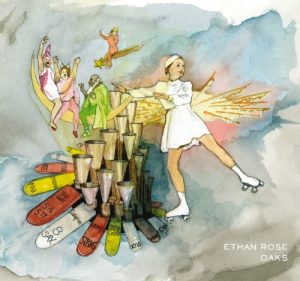 Splendor In The Grass
Splendor In The Grass
Pink Martini
Heinz Records
In all ways and in every way, Pink Martini are an anachronism. Their music hearkens to another time- a more simple, more innocent time. Certainly those days were no less musically sophisticated than now. In fact, based on Pink Martini’s music and artistic antecedents, perhaps those times were far more sophisticated than today.
While maintaining their position as Portland’s most high-profile musical ambassadors, the group has toured the nation and the world, associating with well-known orchestras across the country, in a manner that would have made the legendary Stan Kenton envious. How many other Portland bands have repeatedly played the Hollywood Bowl? And while there is no doubt that many (most) Portland musical aggregations would not necessarily find the Hollywood Bowl a venue for which to strive- there is no denying the impressiveness of such a feat. And it is wholly in keeping with the odd trail that has been Pink’s musical journey.
It is well known that Pink Martini is the brainchild of Harvard alum Thomas Lauderdale- whose interest in politics was such that, at one time, he had some aspirations for one day running for mayor. But something stopped him in his politico tracks. His distaste for the ersatz music that was typically performed at political functions, led Lauderdale to assemble his “little orchestra” in 1994 for political and other politically-correct social and civic events.
The music quickly caught on. And why not? As far from rock music as is possible to fly- Pink Martini incorporated elements of soft jazz, world music, Broadway/Hollywood pop, orchestral music (ala Stan Kenton among many others), with a touch of classical thrown in. It is very well-informed music- historically speaking. It was not long after the aggregation’s inception- that Pink Martini began to catch on with the Portland music-loving public at large. And it wasn’t just with yer mom and dad. The kids loved the band too..
In the early days, Lauderdale was occasionally disposed to wearing a dress on stage- fondling his piano- ala Liberace, gazing over his shoulder at the audience with a longing fondness that was as endearing as it was odd. And in those early days, Pepe Raphael (eventually of Pepe and the Bottle Blondes), who was the prominent vocalist for the outfit at that time- also occasionally cross-dressed for some affairs. Pepe was highly-adept at Latin flavored material- but Lauderdale was far more adventurous than just playing “Cuban Pete” in some campy presentation. Thomas Lauderdale was far more ambitious than that.
Lauderdale’s encyclopediac musical influences included, but were in no way limited to, a wide array of musicians and styles: certainly Juan Esquivel (father of “Space Age Bachelor Pad” music), Henry Mancini, Martin Denny (the “Father of Exotica”), Kenton, Bert Kaemfert, Percy Faith, 60’s Bossa Nova stylings and exotic film soundtracks (think Francis Lai’s Bossa Nova score for the 1966 film “A Man And A Woman), as well as countless foreign performers (known and unknown) and musical curios, from across the face of the planet. It seemed to be Thomas’ responsibility to keep that sort of music alive.
Pink Martini recorded their first album, “Symapthique,” beginning in late 1996 and released it a year later. By that time, Raphael was on his way out of the band (he does make vocal appearances on “Sympathique“), while a charming young songwriting singer, China Forbes (she had already released a pop album of her own by then)- whom Lauderdale knew from his Harvard days- took over full time vocal duties. And, thus, a musical marriage was born.
“Sympathique” took the world by storm. That is no exaggeration. Well over a million copies of the album have been sold, worldwide. A million copies. The band quickly (in Martini time) followed with “Hang On Little Tomato” in 2004 and “Hey Eugene,” in 2007 a scant two and a half years later.
And now, only a year and a half after that (the band also released a sparkling DVD last Spring) we have “Splendor In The Grass.” As was suggested in these very pages in the 2007 review of “Hey Eugene,’ the band have also rendered their previous releases to vinyl- a process which, given Lauderdale’s incredibly picky attention to detail, was no easy accomplishment- but highly worth the effort and the wait.
For this outing, as is their wont, the Martinis employ the services of several guest artists- including 90-year-old cancione ranchera singer Chavela Vargas; Dandy Warhols’ leader Courtney Taylor-Taylor (though, as might be expected, he’s a tad hard to find); as well as Emilio Delgado (“Luis” on Sesame Street- alas, no Big Bird, however) and, probably most strangely, Ari Shapiro of NPR fame. This last inclusion could easily be some sort of a payoff for all the attention Pink has received from NPR over the years- it’s hard to explain.
And, as usual, the set is an eclectic mix of four obscure (and not so) cover songs, mixed with nine original numbers crafted by Lauderdale and Forbes. Leading things off is the European flavored lullaby, “Ninna Nanna.” A wordless windy chorus of male backing singers and a lush string arrangement support China’s emotion-soaked vocal evocations, apparently in Italian. Trumpeter Gavin Bondy and trombonist Robert Taylor provide a foggy solo at the end to complete the moody tour-de-force. Very typically Pink Martini fare. The Latin flavored ‘60s-ish instrumental “Ohayoo Ohio” (loosely “Hi Ohio” in Japanese) follows. Bondy is given plenty of room to show off his brass chops- as a familiar sounding “bop-bop-ba” chorus supplies texture. Henry Mancini meets Juan Esquivel at Martin Denny’s house.
“Splendor In The Grass,” another original song, follows. The song’s sentiment may have been lifted from the William Inge screenplay of the same name; the title of which was taken from a poem by William Wordsworth: “Of splendor in the grass/Of glory in the flower/ We will grieve not, rather find/Strength in what remains behind.” The actual song could have been lifted from any number of ‘70s pop radio-hits, including the New Seekers’ 1973 hit “I’d Like To Teach The World To Sing,” with perhaps an intimation of “One Tin Soldier” (performed in 1971 by Coven).
Courtney Taylor-Taylor is in the mix but only in a vaguely sparse sort of way. But probably the biggest surprise comes in the musical interlude in the middle, when the string section freely quotes Tchaikovsky’s Piano Concerto #1 in B-flat Minor, the pounding chords of which Lauderdale quietly quotes throughout the second verse. An odd touch, that certainly adds to the “splendor” aspect of the song.
“Ou Est Ma Tete” (“where is my head”) begins with a piano filigree reminiscent of Kander and Ebb’s legendary “New York, New York,” and then China takes over on vocal- displaying her intrinsic knack for accent and language, this time French; as conga men Brian Davis and Derek Rieth and drummer Martin Zarzar provide Latin-y percussion beneath Lauderdale’s opulent piano features.
“And Then You’re Gone” and “But Now I’m Back” would seem to be two chapters from the same story (starring Lorenzo and Maria). According to Lauderdale, both songs were loosely derived from Franz Schubert’s “Fantasy For Piano For Four Hands,” to which I say- “OK, if you say so”). Forbes asserts the first scene with “And Then You’re Gone,” a song somehow suggestive of Abba’s “Fernando,” (as if it were performed in the ‘60s by Vicki Carr). Shapiro’s rather pedestrian turn on “But Now I’m Back” gives clear indication that he is no Pepe Raphael. But it’s a cute song (“now he‘s back/cut him slack”)- and probably guaranteed of NPR air-play, given Shapiro’s pedigree.
The roiling Bossa Nova, “Sunday Table,” vaguely calls to mind Astrud Gilberto’s legendary “Girl From Ipanema,” as Forbes sings in the same halting manner as her predecessor- while Thomas’ piano phrasings echo those of guitarist Joao Gilberto on the original hit. The song could be from a third person viewpoint (“The Boy From Ipanema”?)- watching the boy observing the girl who “swings so cool and sways so gentle.”
“Over The Valley” begins as one of Erik Satie’s Gymnopedies, before launching into the sort of ballad Doris Day would have recorded. Very pleasant. “Tuca Tuca” reprises the 1970 hit made famous by Italian game and variety show hostess, Rafaella Carra, but more laid back than the original. Solos by Robert Taylor on trombone and, of all things, a bizarre sitar break from bassist Phil Baker effectively enhance the presentation.
The arrangement of “Sing” is nearly identical to that of the Carpenters’ hit version from 1973, until the key changes and Emilio Delgado enters to sing the song in Spanish (as he did with Bob McGrath in their 1971 version from the television show). Grant High School’s Royal Blues choir, along with Pink Martini office staff and members of mayor Sam Adams’ staff provide the backing chorus.
Celebrated 90-year-old Mexican folk singer Chavela Vargas takes a familiar run around the block with Agustin Lara’s classic torch song “Piensa en mi.” The peripatetic Varga- who didn’t really get her professional singing career rolling (with cancione ranchera legend, band leader Jose Alfredo Jimenez) until she was in her forties, was rumored to have had affairs with half of Mexico, including Diego Rivera and Frida Kahlo. To hear her sing the song, is to allow into one’s heart the weariness of the 20th century weighing upon her elderly, but still archetypal voice- which could bring anyone to tears. Touching.
Without a doubt, the most hauntingly exotic of all the pieces presented here, the ghostly “New Amsterdam,” written by Viking helmeted, blind, homeless New York city eccentric Moondog, is at the top. With a melody that has been covered many times, by many musicians, Forbes intones the colorfully deep lyrics, which include a brief history of the origins of the city. Sax and clarinet duet a soulful nocturne solo section.
With “Splendor In The Grass,“ Pink Martini don’t so much break new ground as lay further claim to the turf they have already staked out. There is no other musical ensemble in the world like Pink. They are throwbacks to a time that never really existed- in any one place in this world. The high level of musicianship and hipness they purvey is beyond the ken of any band functioning in this current universe. They were made for movie soundtracks and themes for commercials. While Forbes and Lauderdale’s songwriting isn’t particularly great, it is extremely cheeky- layered with witty panache. They wear their influences well, if perhaps a bit shallowly at times. To listen to a Pink Martini album is to take a tour of the world, with a knowledgeably savvy guide- without ever leaving the comfort of the easy chair in the living room.


 The Hazards of Love
The Hazards of Love
